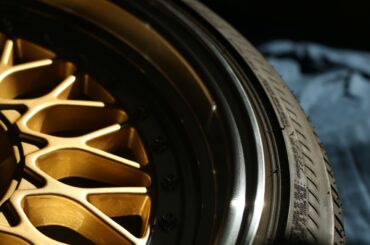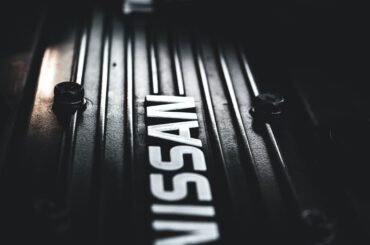Dealing with a stuck license plate screw can be a frustrating predicament many vehicle owners encounter. A stuck screw can make it challenging to remove or replace a license plate, whether due to rust, over-tightening, or other factors. It’s important to address this issue promptly to ensure proper license plate display, prevent further damage, and maintain compliance with legal requirements.
This article will explore effective methods to help you tackle a stuck license plate screw. We’ll cover various techniques, including applying penetrating oil, using heat, increasing leverage, employing pliers or wrenches, and even utilizing specialized tools like screw extractors. By following these methods and taking necessary precautions, you can successfully resolve this common problem and get your license plate securely in place.
Contents
Causes of Stuck License Plate Screws
Stuck license plate screws can be attributed to several factors, each of which can contribute to the removal challenge. Understanding these causes can help adopt the appropriate method for effectively addressing the issue. Here are some common reasons for stuck license plate screws:

1. Rust and corrosion buildup due to exposure to elements:
License plates are exposed to various environmental conditions, such as rain, snow, salt, and moisture. Over time, this exposure can lead to the formation of rust and corrosion on the screw threads, making them difficult to loosen or remove.
2. Over-tightening during installation:
During the initial installation of the license plate, it’s not uncommon for screws to be tightened excessively. Over-tightening can cause the screw threads to bind tightly with the mounting bracket or the vehicle’s body, making subsequent removal challenging.
3. Poor-quality or damaged screws:
Low-quality screws or those damaged over time may have compromised threads or heads. This can make them more susceptible to corrosion, stripping, or breakage, resulting in a stuck screw.
4. Environmental factors such as salt or moisture:
Certain regions experience high salt levels on the roads during winter or have consistently humid climates. Salt or excessive moisture can accelerate corrosion, making screws more prone to getting stuck.
By identifying these common causes, you can better assess the condition of the stock license plate screw and choose the most suitable removal method.
Assessing the Situation
Before attempting to remove a stuck license plate screw, it is essential to assess the situation to ensure a safe and effective removal process. Consider the following factors when assessing the situation:
1. Safety precautions: Begin by parking your vehicle on a level surface and using the brake. This helps to stabilize the vehicle and prevent any unexpected movement while working on the stuck screw.
2. Inspecting the screw: Take a close look at the stuck license plate screw to determine its condition, type, and level of corrosion. Assessing the screw will help you choose the most appropriate removal method and determine if additional tools or products, such as penetrating oil, are necessary.
3. Evaluating accessibility: Check the space around the license plate screw to ensure enough room to work comfortably. Observe if any obstructions, such as license plate frames or bumper accessories, need to be temporarily removed to gain better access to the screw. It’s important to have enough space to apply the required force or use tools effectively without risking damage to surrounding components.
By taking these assessment steps, you can ensure a safer and more efficient removal process for the stuck license plate screw. Additionally, it allows you to determine the best approach based on the specific conditions of the screw and its surrounding environment.
Methods to Remove a Stuck License Plate Screw
When faced with a stuck license plate screw, you can try several effective methods to loosen and remove it. Consider the following approaches:
A. Method 1: Applying Penetrating Oil
Penetrating oils are highly effective in breaking down rust and corrosion, making them popular for loosening stuck screws. These oils seep into the tight spaces between the screw and the surrounding material, facilitating easier removal. Apply the oil generously to the stuck screw and allow it to penetrate for a few minutes. Then, using a suitable screwdriver or pliers, attempt to turn the screw counterclockwise. Maximize the oil’s effectiveness by gently tapping the screwdriver to help dislodge any stubborn residue.
B. Method 2: Utilizing Heat
Heat can help expand the metal and break the bonds holding a stuck screw in place. Using a heat gun or hairdryer, apply heat to the area around the screw for a minute or two. Be cautious not to overheat any surrounding plastic parts or paint. The heat will help loosen the screw, making it easier to remove. While the screw is still warm, carefully use a screwdriver or pliers to turn it counterclockwise.
C. Method 3: Increasing Leverage
Proper leverage is crucial when attempting to remove a stuck screw. If you’re using a small screwdriver that doesn’t provide enough torque, switch to a larger one or consider using a screwdriver with a longer handle. The increased length will give you more leverage, making it easier to turn the screw. Ensure that the screwdriver fits securely into the screw head to prevent slippage. Apply steady, controlled force to avoid damaging the screw head.
D. Method 4: Using Pliers or Wrench
For screws with accessible heads, using pliers or a wrench can provide additional grip and leverage. Choose the appropriate size and type of pliers or wrench that can securely grasp the screw head without causing damage. Hold the screw head firmly and turn it counterclockwise. The increased grip and leverage provided by pliers or a wrench can help break the screw free.
E. Method 5: Employing Specialized Tools (e.g., Screw Extractor)
In more challenging cases, specialized tools like screw extractors can be used. Screw extractors are designed to remove stripped or stuck screws. They involve drilling a small hole into the screw, then using the extractor to turn it counterclockwise. Use caution and follow the instructions provided with the screw extractor to avoid further damage to the screw or surrounding materials.
By systematically trying these methods, you increase your chances of successfully removing the stuck license plate screw.
Troubleshooting and Additional Tips
During removing a stuck license plate screw, you may encounter certain challenges. Here are some troubleshooting tips and additional advice to help you overcome obstacles and ensure a successful outcome:

1. Troubleshooting common issues:
– If the screw is still not budging, repeat the penetrating oil or heat application and allow it more time to work.
– If the screw head becomes stripped, try using a rubber band between the screwdriver and the screw head for added grip.
– In the case of severe corrosion or damage, consider moving on to alternative methods or seeking professional assistance.
2. Alternative methods for extreme cases:
– If all else fails, you can try drilling a small hole beside the stuck screw and using a screw extractor to remove it.
– Another option is to carefully cut a slot across the screw head using a rotary tool or hacksaw, then use a flathead screwdriver to turn it.
3. Safety precautions to prevent damage:
– Avoid using excessive force or sudden jerks, as this can damage the vehicle or license plate.
– Protect the surrounding areas with tape or cloth to prevent accidental scratches or paint damage.
– If using heat, keep the heat source safe from plastic components to avoid melting or warping.
Seeking Professional Assistance
While attempting to remove a stuck license plate screw can often be done successfully using DIY methods, there are situations where professional help may be necessary. Here’s a brief overview of when to consider consulting an automotive technician or mechanic, the benefits they can provide, and how to find a reliable professional in your area:
1. When to consider professional help:
– If you have exhausted all DIY methods without success.
– If the stuck screw is severely corrupted, stripped, or damaged.
– If you are uncomfortable or inexperienced with automotive repairs.
– If you are concerned about causing damage to your vehicle or license plate.
2. Benefits of consulting an automotive technician or mechanic:
– Expertise: Automotive professionals have the knowledge and experience to handle challenging situations involving stuck screws.
– Specialized Tools: They possess a wide range of specialized tools and equipment that may not be readily available to the average person.
– Minimized Risk: Professionals can minimize the risk of causing further damage to your vehicle or license plate during removal.
– Time and Effort: By entrusting the task to a professional, you can save time and effort by relying on their expertise and efficiency.
3. How to find a reliable professional in your area:
– Seek Recommendations: Ask friends, family, or colleagues for recommendations on reliable automotive technicians or mechanics they have worked with.
– Online Research: Utilize resources such as review websites or forums to find reputable professionals in your area. Read reviews and ratings to gauge their quality of service.
– Check Certifications: Look for professionals certified by reputable organizations or with relevant automotive repair qualifications.
– Consult Local Auto Shops: Contact local auto repair shops or dealerships and inquire about their services for removing stuck license plate screws.
Conclusion
Dealing with a stuck license plate screw may seem like a minor inconvenience. Still, it is crucial to address the issue promptly to ensure proper license plate display, prevent further damage, and comply with legal requirements. Throughout this article, we have explored various methods to help you successfully remove a stuck license plate screw. You can overcome this common challenge by following the suggested techniques, such as applying penetrating oil, utilizing heat, increasing leverage, using pliers or wrenches, or employing specialized tools like screw extractors.
Remember to assess the situation, take necessary safety precautions, and troubleshoot common issues that may arise during the removal process. In extreme cases or if you lack the confidence or experience, it is wise to seek professional assistance from automotive technicians or mechanics with the expertise and specialized tools to handle complex situations.

You can tackle the issue by addressing a stuck license plate screw with the guidance provided in this article. Remember to exercise patience, follow the recommended steps, and adapt the methods according to the condition of the screw. With perseverance and the appropriate approach, you can successfully remove the stuck license plate screw and ensure a secure and properly displayed license plate on your vehicle.
More Posts :
Unraveling the SUV Classification: Is an SUV Truly a Truck or a Car in 2023?






